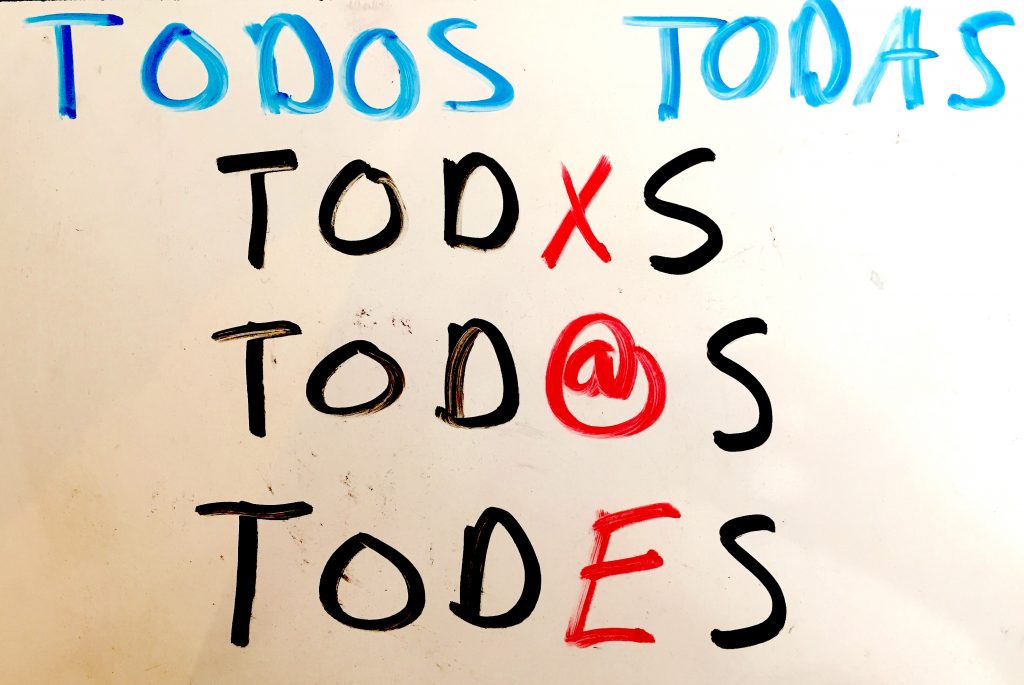Tú and usted, using the forms of you in Spanish:
 In our work with professionals learning Spanish for workplace communication, we often encounter the patterns they learned in high school or college Spanish courses taken years before. One of the most common is the tendency to default to the tú form of you in Spanish when speaking to someone. This isn’t always the most appropriate way to address someone in the professional setting.
In our work with professionals learning Spanish for workplace communication, we often encounter the patterns they learned in high school or college Spanish courses taken years before. One of the most common is the tendency to default to the tú form of you in Spanish when speaking to someone. This isn’t always the most appropriate way to address someone in the professional setting.
Do your students have a default “you” form?
Most of our clients had Spanish courses at some point in the past, and learned that usted is reserved for speaking to elders and people in positions of authority, or when showing respect. Having learned this, they generally default to using tú in the classroom – practicing usted only in the context of grammar drills, not everyday speech. This may even be reinforced by a study abroad or immersion experience in which the student uses tú with host families and classmates. One should certainly follow the lead of the locals when in another country, and the tú tendency isn’t incorrect, but it doesn’t account for many situations your students are likely to encounter later in their professional lives.
When and where are your students likely to use Spanish in the future?
For previous generations in the United States, students studied Spanish primarily for traveling in Spanish-speaking countries, or enjoying Spanish art and literature. However, as the Spanish-speaking population in the U.S. continues to grow, the purpose this skill serves has changed drastically. Over the course of their adult lives, your students are far more likely to use Spanish in their jobs in the U.S. than on extended periods of international travel or work. This is an exciting shift for Spanish educators because it reinforces the practical nature of learning Spanish, but means that we need to equip our students to embrace a style of communication (and understand a cultural value) that is appropriate with Latinos of all backgrounds here in the United States.
Are your students prepared to set the tone as professionals?
Unfortunately, because we don’t have an equivalent of usted in English – nor is our culture used to building in respectful deference to another peer in this way – most of our students don’t understand the appropriateness of using usted with people of the same age and/or even younger ages. The truth of the professional world is that usted is appropriate in many more settings than a young person speaking to an elder.
Usted is always an appropriate form of you in Spanish, at least for initial contact with Latino clients, employees, patients, etc. It may be tempting for non-native speakers to skip usted and use tú automatically, but it can have significant negative consequences in the professional setting. While North Americans tend to invoke informality in order to make someone feel at ease, this directly contradicts the respeto and ritual formality that is an important part of Latino relationships.
The safest rule of thumb for our future young professionals is to build formality and respect into their conversations. This one relatively simple classroom tip will certainly help our future managers build loyalty with their team members, our future sales professionals gain the confianza they need to be successful in international business, and our future healthcare professionals establish a positive rapport with their patients.
So what does Common Ground suggest? Consider establishing one day a week where everyone has to use the usted form in class. This seemingly small change in tone may appear insignificant to the native English speaker, but it’s definitely worth the effort to keep the usted form fresh in students’ minds so that they can move freely between the forms of you in Spanish as necessary in the future.




